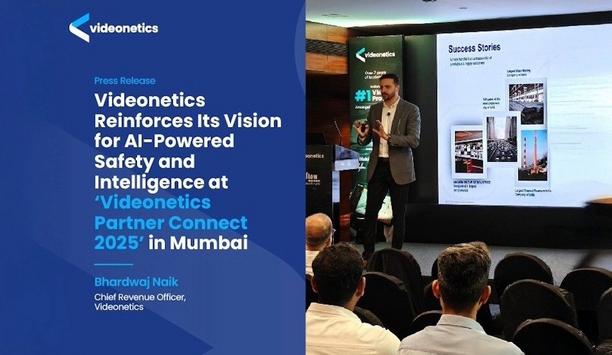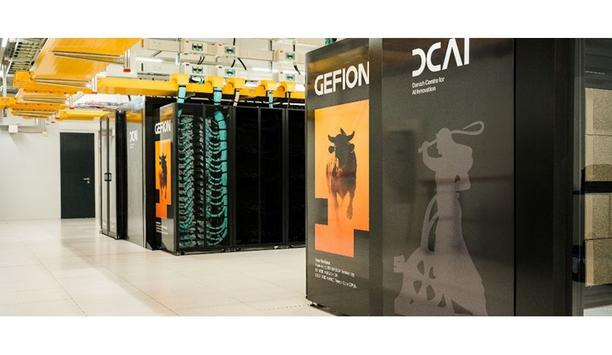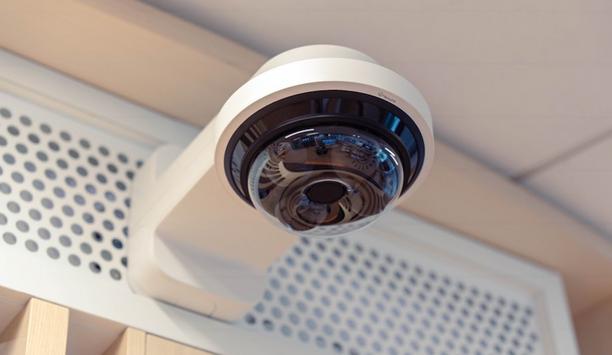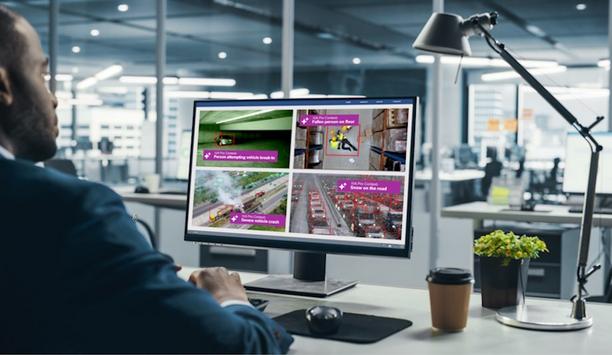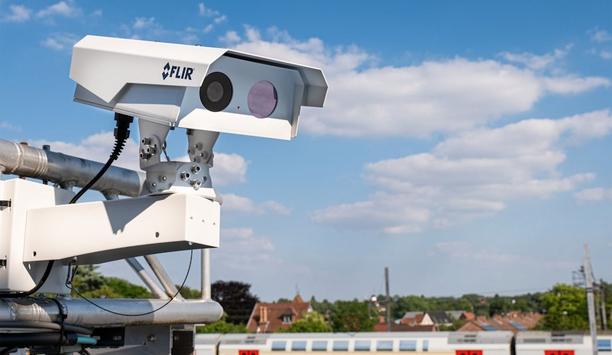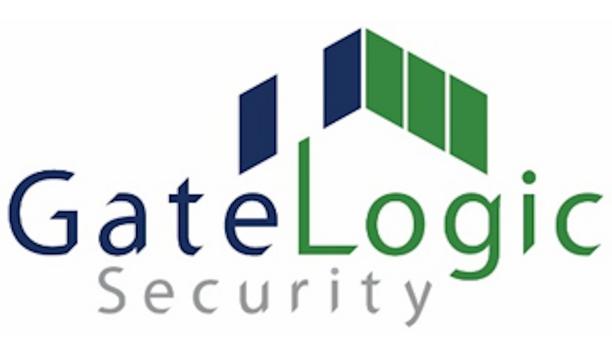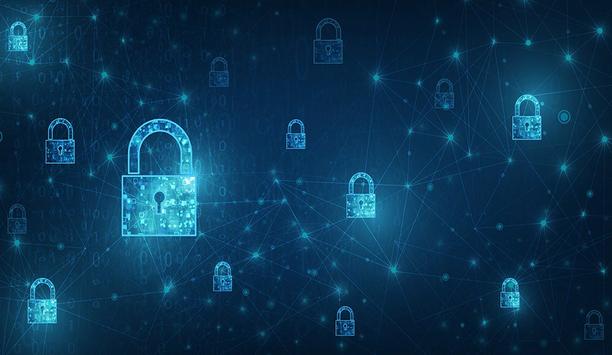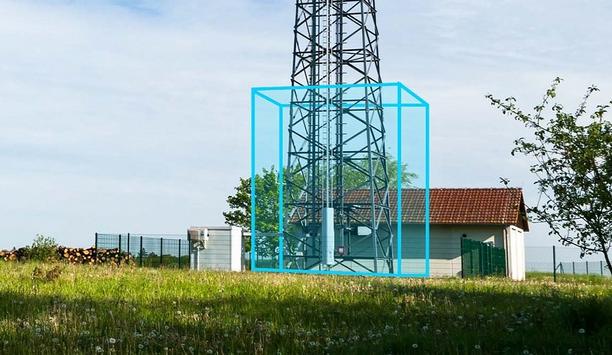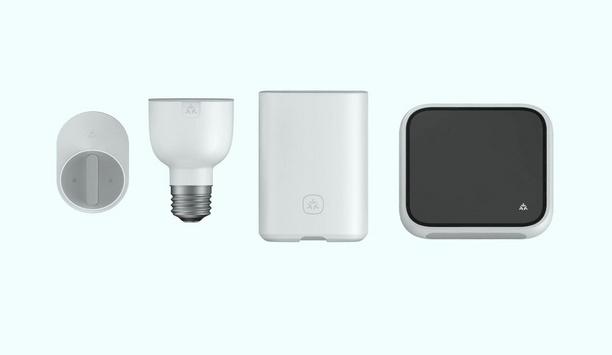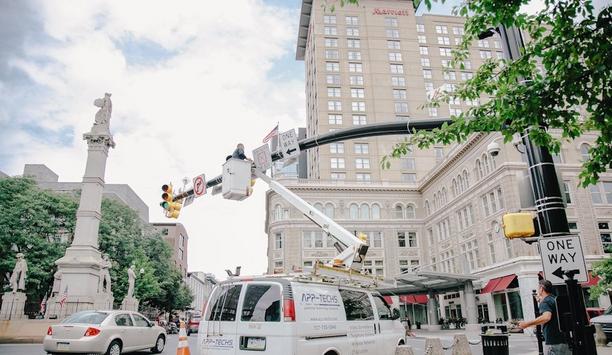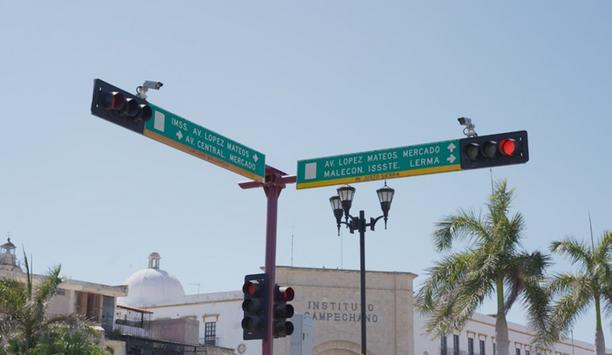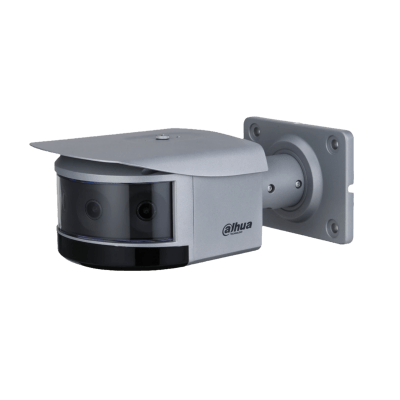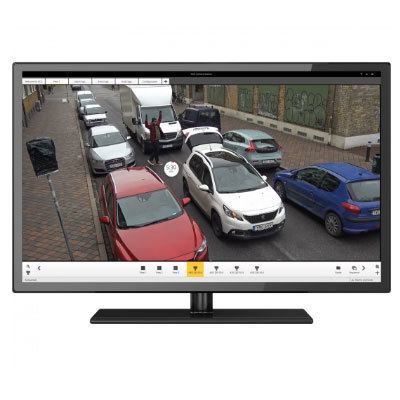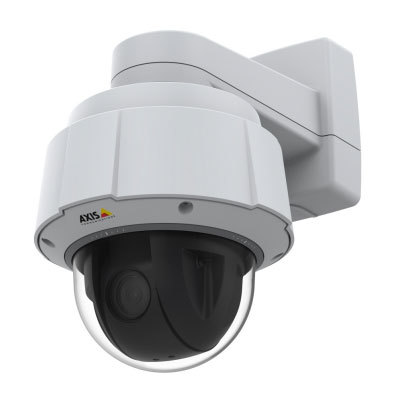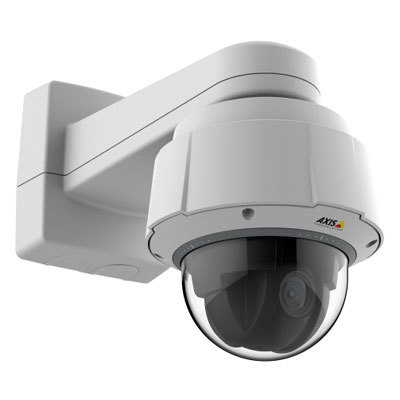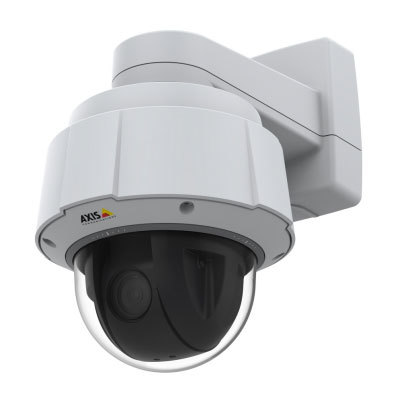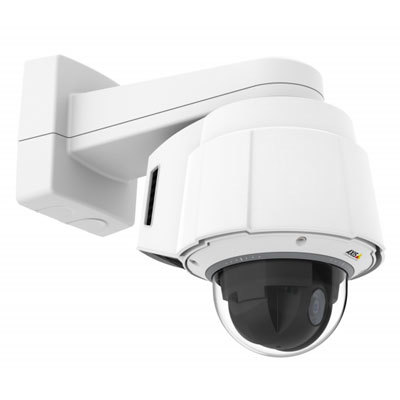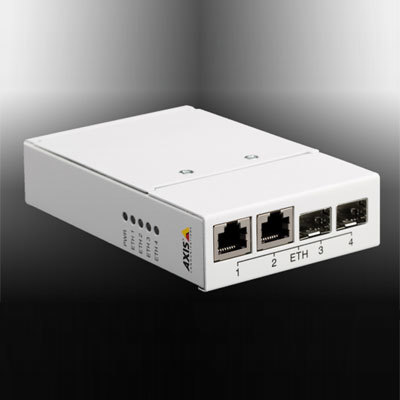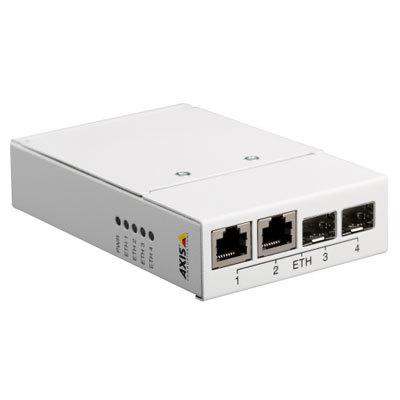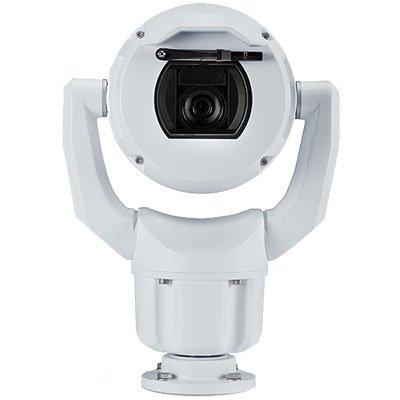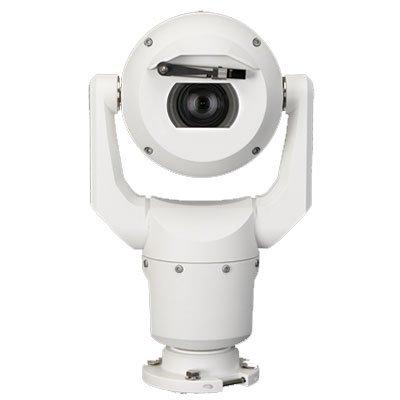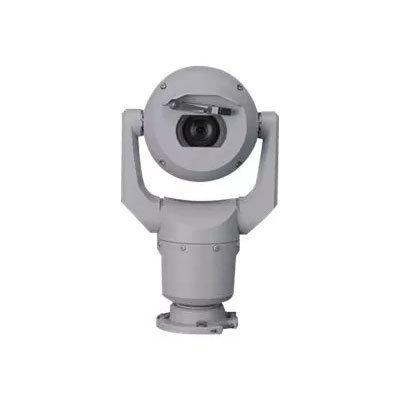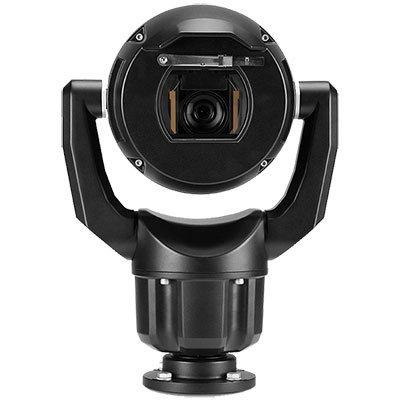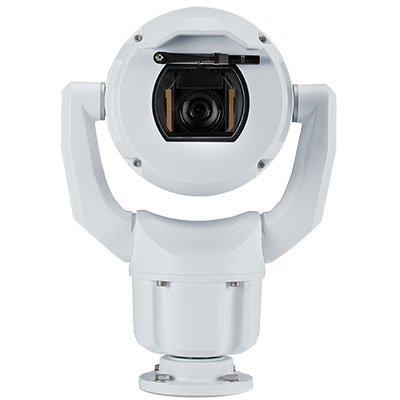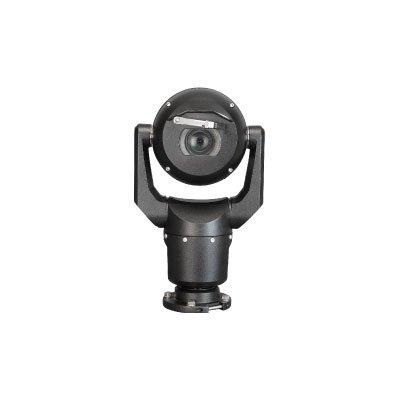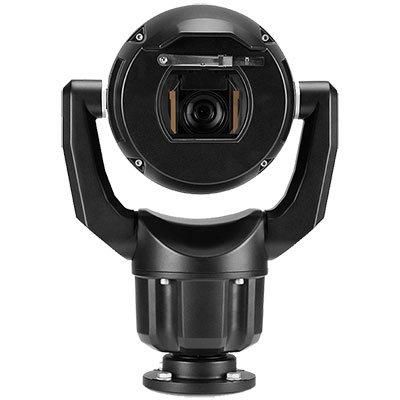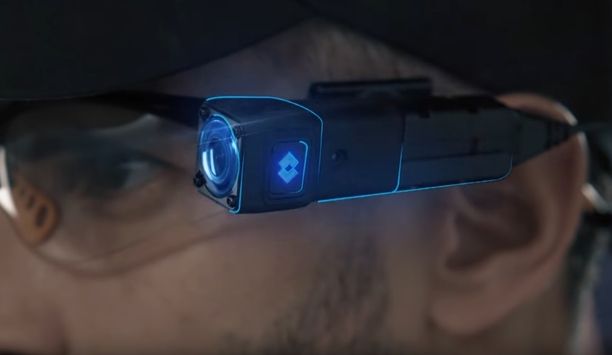City Surveillance
Videonetics, the pioneer in True AI-powered video analytics and unified video computing platforms, reaffirmed its commitment to shaping the future of intelligent video technologies at Videonetics Partner Connect 2025, held on December 5 in Mumbai. The gathering brought together partners, system integrators, and customers across the government and enterprise landscape, serving as a strategic platform for deepening collaboration and accelerating the adoption of AI-driven video intelligence a...
Milestone Systems will use the GEFION supercomputer to accelerate the development of sovereign, responsible, and high-performance AI within Europe. The work will focus on the deployment and fine-tuning of the world’s most advanced AI Vision Language Model (VLM) for traffic and smart city applications, developed by Milestone in collaboration with NVIDIA. Today, millions of video cameras capture valuable footage that could improve everyday life. Yet much of this potential remains untap...
It is the time of year when city centers transform, as outdoor Christmas markets fill town squares and high streets. An estimated 6,000 markets will open across Europe during the festive season, with some of the largest — including Nuremberg’s Christkindlesmarkt, London’s Hyde Park Winter Wonderland and Craiova in Romania — welcoming millions of visitors. Sadly, these popular events have in recent years been the subject of attacks, most notably Berlin in 2016 and the tra...
Hanwha Vision, the global vision solution provider, has opened its cutting-edge Experience Centre in Paris, reinforcing its commitment to the French market and accelerating its expansion in this key market. The Paris Experience Centre provides a dedicated space for customers and partners to engage directly with Hanwha Vision’s next-generation AI surveillance technologies. Visitors can experience firsthand how the company’s latest solutions – including AI-powered cameras...
Roc Technologies, a managed services provider, has announced it has been chosen as the strategic partner by the City of London Corporation to deliver an end-to-end networking connectivity solution, encompassing a UK-first enterprise SASE rollout for public services, AI-driven wireless capability and high-availability internet. Fueled by a mandate to create a “One City” experience for millions, the City of London aims to redefine how world-class connectivity empowers residents, visit...
Milestone Systems, a world pioneer in data-driven video technology, announced a forthcoming generative AI-powered video analytics plug-in for its XProtect video management software, developed in collaboration with NVIDIA. Designed to help operators contextualize alarms and focus on what truly matters, the new tool automates video review, filters out false alarms, and based on initial findings could reduce up to 30% of operator alarm fatigue. A beta version will debut at Smart City Expo World C...
News
At GSX 2025, September 29 – October 1, Bosch Video Systems will introduce products and solutions designed to significantly enhance situational awareness for customers. Visitors to the GSX booth 1555 will experience a GenAI solution with reasoning capabilities, cameras with edge-based AI, and the latest version of BVMS software that helps users focus on events that need attention. Leveraging visual intelligence, the new offerings empower customers to anticipate potential incidents and quickly take measures to address adverse situations. An intelligent assistant powered by GenAI In the cloud, IVA Pro Context takes over to analyze the scene in depth, providing a second layer of intelligence By transforming simple user-created prompts into detailed, actionable instructions for monitoring specific tasks, IVA Pro Context acts as an intelligent assistant for customers. It uses a next-generation hybrid architecture that combines edge-based AI video analytics with the deep contextual understanding of cloud-based GenAI. At the edge, IVA Pro performs real-time object detection, activity recognition, and metadata generation delivering the first layer of semantic insight directly from the camera. In the cloud, IVA Pro Context takes over to analyze the scene in depth, providing a second layer of intelligence. This layer helps users understand what is happening and why it matters in a specific scenario to support proactive decision-making and problem-solving across complex environments. AI-enabled cameras for high security applications GSX booth visitors will also see an expanded portfolio of AI-enabled cameras designed to enhance surveillance and perimeter security. The DINION thermal 8100i camera combines advanced thermal imaging with built-in IVA Pro Perimeter to capture images of intruders who are moving, crawling, rolling, or camouflaged up to 1,923 feet away. Uncooled microbolometer/VOx thermal technology and large aperture optics capture even the slightest temperature changes in people and objects. When combined with IVA Pro Perimeter, the cameras provide the most reliable long-distance object detection, while minimizing false positives to ensure operators receive alerts only when needed. Latest AUTODOME 7100i cameras feature The latest AUTODOME 7100i cameras feature built-in IVA Pro Buildings, IVA Pro Perimeter The latest AUTODOME 7100i cameras feature built-in IVA Pro Buildings, IVA Pro Perimeter, and the new IVA Pro Privacy. IVA Pro delivers reliable and precise object detection and classification for city surveillance, traffic monitoring, and long-distance perimeter detection. With IVA Pro Privacy, the cameras collect actionable insights while ensuring anonymization using semi-transparent masks for moving objects, faces, individuals, or vehicles. The cameras also support IVA Pro Traffic, IVA Pro Intelligent Tracking, and IVA Pro Appearance licenses for intelligent monitoring of traffic and crowds. Smarter surveillance software for a seamless response BVMS 13.0 improves operators’ ability to assess a situation through interactive maps. Operators can see real-time movement of objects, such as people and vehicles, directly on a map, along with designated activity zones. This feature provides a live and intuitive overview of what is happening and where. Supporting early detection of unusual activity, BVMS transforms video into actionable intelligence empowering users to respond faster and seamlessly manage operations. For details on these solutions and more, visit the GSX booth 1555. Video Systems and Solutions, branded Bosch, are offered by the Keenfinity Group.
The Board of Directors of The Monitoring Association (TMA) announces the appointment of Whitney A. Doll as the organization’s new CEO. A dynamic association executive with over 18 years of experience, Doll has dedicated her career to helping mission-driven organizations expand their reach, optimize operations, and deliver unparalleled value to members, customers, and stakeholders. Doll will assume executive management responsibilities at TMA effective October 1, 2025. Commitment to innovation "We are thrilled to welcome Whitney to TMA. Over the course of her career, she has consistently demonstrated a distinct commitment to innovation and customer success,” stated TMA President, Steve Butkovich. He adds, “The depth and breadth of her leadership skills set her apart among the candidates we met. With her combination of knowledge, talents, and experience, she is uniquely qualified to strengthen our value proposition and to accelerate membership growth and engagement.” “I am honored to join TMA as its CEO, and I look forward to working with TMA's board, members, and stakeholders to advance professional monitoring through education, advocacy, and standards,” commented Whitney A. Doll, adding “Together we will create a safer world and ensure a bright future for the association and the professional monitoring industry.” Successive executive positions Whitney A. Doll has served successive executive positions at the International Code Council (ICC), the major global source of model codes and standards and building safety solutions, over the past eight years, most recently serving as the executive vice president of customer engagement. Before ICC, she held multiple positions on the communications team, at CNA, a nonprofit research and analysis organization dedicated to the safety and security of the nation.
At FLIR, they see things a little differently. They are constantly looking of new ways to enhance the safety and efficiency of cities around the world, through ground-breaking innovation and advanced technological excellence. This way of thinking has led us to find solutions that take care of road systems, and most importantly, take care of the people using them. Intro of FLIR TrafiSense Dual AI FLIR will demonstrate the seamless integration of its updated AI sensors into traffic lights Continuing its visionary approach, Flir is set to showcase cutting-edge embedded AI innovations that promise to optimize traffic flow at this year's ITS World Congress. Among the highlights is the introduction of FLIR TrafiSense Dual AI, a revolutionary easy-to-install solution for improving safety and efficiency in urban traffic. In addition to these advancements, FLIR will demonstrate the seamless integration of its updated AI sensors into traffic lights, presenting a smart solution for advanced traffic data collection in complex urban settings. FLIR's proprietary AI technology Visitors get informed about how FLIR's AI sensors turn the concept of vehicle-to-everything (V2X) connectivity into a tangible reality today, facilitating communication between vehicles, infrastructure, and pedestrians/bicycles. TrafiBot AI guarantees top-tier detection quality and traffic data precision for tunnels The compact and rugged TrafiBot AI, a CCTV camera solution, combined with the Cascade management system, offers automatic incident detection, traffic monitoring, and smoke detection. Fueled by AI and its patented 3D world tracker technology, TrafiBot AI guarantees top-tier detection quality and traffic data precision for tunnels, bridges, and highways. Importantly, FLIR's proprietary AI technology ensures license-free usage. Boundaries of AI in traffic management The TrafiBot Dual AI has all the advantages of the TrafiBot AI, but on top it has the best-in-class fire detection for tunnel environments, making it the fastest and most reliable fire detection system in the world. With a reputation as a supplier of field-proven technology, FLIR continues to excel with comprehensive, all-in-one solutions. The company's commitment to pushing the boundaries of AI in traffic management is evident in its forward-thinking technologies that promise to transform the way we navigate and optimize traffic environments. Visit FLIR at the ITS World Congress 2025.
With Thailand aiming to develop 105 smart cities by 2027 under the Thailand 4.0 and Eastern Economic Corridor (EEC) programmes, Secutech Thailand 2025 is dedicated to delivering valuable solutions that directly address the country’s forward-thinking Smart City initiative. Scheduled to take place from 5 to 7 November at the Queen Sirikit National Convention Center (QSNCC), the event responds to growing demand for integrated safety and security technologies driven by rapid urban planning, digital transformation, and infrastructure development. Smart city initiatives Secutech Thailand 2025 is structured into distinct key areas that highlight key results aligned with this goal Featuring an expanded visitor profile, attendance from government and municipal authorities, and co-location alongside the Thailand Smart City Expo and EdTeX, exhibitors will be linked with qualified leads across multiple sectors. As Thailand’s Digital Economy Promotion Agency (DEPA) and Board of Investment continue to accelerate the country’s smart city initiatives, Secutech Thailand 2025 is structured into distinct solution areas that highlight key innovations aligned with this goal. Urban safety and security challenges Ms Regina Tsai, General Manager of Messe Frankfurt (HK) Ltd – Taiwan Branch, explained: “Inspired by the thoughtful design of a smart city, Secutech Thailand 2025 is organized into four focused solution areas, making it simple for buyers to locate relevant exhibitors." "Each one showcases the latest solutions essential to realizing Thailand’s smart city vision by addressing evolving urban safety and security challenges.” Exhibitors present integrated smart city solutions Set to cover 11,600 sqm, global exhibitors will present integrated smart city solutions across the show floor: The Urban Surveillance & Platforms solution area focuses on city-wide visibility, traffic control, and central monitoring. It will feature AI surveillance cameras, traffic monitoring systems, video platforms (VMS/PSIM), and cloud or edge-based video storage. These innovations support smart city functions such as monitoring public spaces, mobility analytics, and enabling seamless integration with command centers. Meanwhile, the Building Safety & Fire Systems solution area presents smoke, heat, and gas detectors, fire alarm panels, emergency PA and evacuation systems, fire-rated doors, sprinklers, fire pumps, and comprehensive in-building safety monitoring. With the safeguarding of diverse environments in mind, these solutions assist with prompt fire detection, alerting, suppression, and evacuation across offices, shopping centers, educational facilities, and mixed-use buildings. Within the Smart Access & Identity solution area, exhibitors will specialize in authorized entry and identity verification through biometric tools like fingerprint and facial recognition, alongside mobile and card readers, smart locks, license plate recognition, turnstiles, visitor management, and cloud-based access control solutions. These systems enable smart, secure movement across buildings and infrastructure. Finally, the Rescue, Response & Firefighting solution area highlights advanced equipment designed for rapid emergency response, including rescue drones, thermal imaging cameras, life detectors, GIS and dispatch systems, mobile command kits, firefighting gear, breathing apparatus, PPE, and EV fire suppression tools (blankets, containment covers, battery cooling). These products permit higher efficiency through smarter search and rescue missions, real-time coordinated responses, and fire suppression in urban, industrial, and high-risk zones. Driving smart city growth by joining exhibitors and buyers The fair is set to draw strong participation from municipal authorities and government agencies Alongside integrators, consultants, and engineers, the fair is set to draw strong participation from municipal authorities and government agencies. Ms Tsai elaborated: “With Thailand’s smart city development accelerating, Secutech Thailand is increasingly integral to linking innovative exhibitors with the key buyers and decision-makers who will shape the nation’s urban future, and we look forward to strong visitor participation this November.” Relevant project stakeholders and end users In line with its commitment to continually enhance value for fairgoers, Secutech Thailand 2025 will debut a curated business matching program designed to connect exhibitors directly with their target buyers. Secutech Thailand 2025 will debut a curated firm-matching program designed to unite exhibitors By allowing suppliers and solution providers to specify desired buyer types in advance, the program enables one-on-one meetings to be scheduled onsite with relevant project stakeholders and end users. This personalized approach helps maximize return on investment by generating qualified leads and fostering meaningful business relationships at the fair. Reliable for digital infrastructure and building projects Co-located with Thailand Smart City Expo and EdTeX, Secutech Thailand 2025 offers buyers the unique opportunity to source cutting-edge solutions across multiple verticals within a single event. Organized in partnership with NCC Management & Development, the show brings together key stakeholders from sectors including real estate, healthcare, education, energy, and transport, as well as specifiers and planners responsible for digital infrastructure and smart building projects. This convergence attracts a diverse range of planners and buyers involved in both city-level initiatives and vertical-sector projects.
Allient Inc., a global designer and manufacturer of specialty Motion, Controls and Power products and solutions for targeted industries and applications, is pleased to announce the appointment of Greg Kraus as Director of Strategic Operations for its Allient Defense Solutions (ADS) business unit. In this role, Greg will lead project and operational excellence initiatives across Allient sites contributing to defense market solutions, while also serving as General Manager of Allient’s Watertown, NY facility. Experience of the new General Manager Greg brings a wealth of leadership and technical expertise to the growing Allient Defense (ADS) team With nearly four decades of experience in the aerospace and defense industry, Greg brings a wealth of leadership and technical expertise to the growing Allient Defense (ADS) team. Prior to joining Allient, he held various roles of increasing responsibility at Moog Inc., spanning business, operations, engineering, program and supply chain management. Notably, he served as General Manager of a $275M Space and Defense business and led large-scale, multi-site systems integration efforts across the entire program lifecycle. At Allient, Greg will act as a key interface between business development and ADS sites, enabling the company to drive disciplined growth through successful project execution. His mandate includes ensuring Allient Defense demonstrates the capabilities, processes, and infrastructure needed to inspire confidence in defense customers and deliver on critical missions. large scale systems integration efforts “I am extremely excited to join the Allient team. I have always been passionate about the people and organizations that defend our freedom. I take great pride in enabling them with products and technologies that support their mission and keep them safe,” said Greg Kraus. “The launch of ADS and Allient’s emphasis on being an agile provider are what attracted me to the organization. My extensive history with large scale systems integration efforts in the A&D industry align well with Allient and ADS.” Multi-site defense programs “We’re incredibly pleased to welcome someone with Greg’s depth of experience to the Allient Defense team. His leadership in complex, multi-site defense programs aligns perfectly with our vision and strengthens our ability to execute with excellence,” said Steve Warzala, President of Allient Defense. “As ADS continues to grow, adding proven leaders like Greg ensures we remain versatile, capable, and committed to delivering mission-critical solutions that exceed the expectations of our defense customers.” Vital integrated systems Allient Defense Solutions is a dedicated vertical market within Allient Inc. focused on delivering essential and vital integrated systems to the defense industry. The addition of Greg Kraus to the leadership team underscores Allient’s commitment to operational excellence and the long-term success of its defense product solutions.
Gate Logic Security, a pioneering provider of advanced automated gates and perimeter security solutions, is proud to announce the acquisition of Aurora Services Inc., a respected name in customized security gate design and automation. This strategic acquisition significantly enhances Gate Logic Security’s capabilities and extends its reach to a broader range of residential, commercial, and estate clients throughout the Mid-Atlantic region. Secure physical perimeters Combined company will deliver an even stronger suite of solutions to secure physical perimeters By integrating Aurora’s renowned expertise in customized ironwork, automation, and access control with Gate Logic’s established platform, the combined company will deliver an even stronger suite of solutions to secure physical perimeters for clients seeking reliability, innovation, and top-tier service. “We are thrilled to welcome Aurora Services into the Gate Logic Security team,” said Shanna Gray, president, Gate Logic Security. Gate Logic’s mission Gray added: “Aurora’s reputation for craftsmanship and customer dedication perfectly complements Gate Logic’s mission to deliver the most trusted, technology-driven perimeter security solutions. Together, we are better positioned than ever to serve our customers with expanded capabilities and unparalleled service." As part of the acquisition, Aurora Services Inc.'s executive Brad Isham will remain with the newly combined company, continuing to play a key leadership role. His decades of experience in the custom security gate industry and commitment to client success will be instrumental in ensuring a seamless transition and driving future growth. Next step in Gate Logic’s growth Gate Logic Security’s leadership in the automated physical perimeter space “It is both a bittersweet and an exciting moment for Aurora Services, Inc. Over the years, Amber and I have built more than a company…. We have built a family of clients, employees and partners who share our vision. The alignment of Aurora and Gate Logic Security is a natural fit,” said Brad Isham. “We share common values of excellence, innovation, and responsiveness to client needs. We are thrilled to be the next step in Gate Logic’s growth and to be working with Shanna. There’s fresh energy and common vision and that will carry customers with both organizations forward." Gate Logic Security’s leadership Isham added: "This is a tremendous opportunity to deliver outstanding gate and access control solutions to current and new customers in our region under the Gate Logic Security brand.” The acquisition reinforces Gate Logic Security’s leadership in the automated physical perimeter space, enabling a broader service offering that includes advanced gate automation, barrier systems, perimeter cameras, and access control technologies — ensuring secure environments for estates, private communities, high-security commercial and government facilities.


Expert commentary
As urban populations grow and security challenges evolve, major Californian cities like Los Angeles, San Francisco and San Diego have increasingly turned to advanced surveillance systems to enhance public safety. Surveillance infrastructure Between 2022 and 2024, these cities have made significant strides in upgrading their surveillance infrastructure, driven by concerns over crime, public safety, and the need for more sophisticated emergency response systems. This article explores how California's urban areas are improving surveillance technologies and practices, with a focus on citywide initiatives, partnerships with technology firms, and the integration of AI-driven systems. Introduction of smart city surveillance The push toward smart city technology has reshaped the security landscape in California The push toward smart city technology has reshaped the security landscape in California. With the state being home to some of the world's most innovative technology firms, cities such as Los Angeles (LA), San Francisco, and San Diego are leveraging this expertise to develop and implement advanced surveillance systems. Citywide surveillance initiatives Since 2022, the state has seen an increase in citywide surveillance initiatives aimed at addressing rising crime rates, enhancing traffic management, and improving emergency response. These systems include AI-enhanced video analytics, high-definition cameras, and real-time monitoring centers, helping law enforcement track and respond to incidents more efficiently. Key surveillance developments across Californian cities 1. Los Angeles: AI and Facial Recognition Integration Los Angeles has led the way in deploying state-of-the-art surveillance systems, particularly in high-crime areas and transportation hubs. In 2023, the Los Angeles Police Department (LAPD) expanded its use of artificial intelligence (AI) in crime prevention. The department integrated AI-enhanced video analytics with its existing network of over 30,000 surveillance cameras throughout the city, a move designed to improve real-time crime detection and automate the identification of suspicious activity. Privacy law compliance The city government has enacted measures to restrict the application of facial recognition to high-priority cases Facial recognition technology has also been a controversial but increasingly used tool in the city’s surveillance strategy. While privacy concerns remain, LA has implemented strict regulations to ensure that this technology is used in compliance with privacy laws. In response to public concerns, the city government has enacted measures to restrict the application of facial recognition to high-priority cases such as locating missing persons or identifying known offenders. According to a 2023 Los Angeles Times report, these technologies have helped reduce violent crime in areas where the systems are deployed, with a notable 15% reduction in crime rates in Downtown LA. 2. San Francisco: Data-Driven Crime Prevention San Francisco, a tech hub, has similarly embraced advanced surveillance systems, with a focus on predictive policing. The city's law enforcement agencies have adopted data-driven approaches that rely on vast amounts of data collected through surveillance cameras and other sensors placed around the city. Pilot programme In 2022, the San Francisco Police Department (SFPD) introduced a pilot program that integrated predictive analytics with its citywide surveillance system. By analyzing patterns of criminal activity, the system can forecast potential hotspots and allocate resources more effectively. Although controversial due to concerns over profiling and civil liberties, the system has been credited with helping police prevent several large-scale crimes. Transparency in the use of surveillance data Measures include annual audits and public reporting, ensuring that the system adheres to standards Moreover, the city has implemented stringent oversight measures to ensure transparency in the use of surveillance data. This includes annual audits and public reporting, ensuring that the system adheres to legal and ethical standards. A 2023 report from The San Francisco Chronicle indicated that this initiative has led to a 10% improvement in response times to major incidents, particularly in high-density areas like the Financial District. 3. San Diego: Smart Traffic and Public Safety Surveillance San Diego has also taken significant steps to upgrade its urban surveillance capabilities. One of the key focuses of the city has been integrating surveillance systems into its transportation infrastructure. The city’s Smart Streetlights program, which began as a traffic monitoring initiative, was expanded in 2022 to include surveillance capabilities aimed at improving public safety. Smart Streetlights programme Under this program, thousands of streetlights equipped with cameras and sensors have been installed throughout San Diego. These lights not only monitor traffic conditions but also detect suspicious activities, accidents, and emergencies. The data collected is transmitted in real-time to the city’s public safety command center, where law enforcement can respond to incidents more quickly. A 2023 evaluation by the San Diego Union-Tribune revealed that the Smart Streetlights program had helped reduce traffic-related accidents by 12% and had become a vital tool in aiding crime investigations. Cybersecurity measures All data collected through its surveillance network is secure from potential breaches or unauthorized access Additionally, San Diego has focused on enhancing its cybersecurity measures to protect the integrity of its surveillance data. The city government partnered with local cybersecurity firms to ensure that all data collected through its surveillance network is secure from potential breaches or unauthorized access. Key technologies driving city surveillance in California The success of these surveillance initiatives can be attributed to the rapid advancement of several key technologies, which have transformed traditional security systems into sophisticated, AI-driven solutions. 1. AI-Powered Video Analytics AI-powered video analytics is at the forefront of city surveillance efforts in California. This technology enables the automatic detection of unusual patterns or activities, significantly enhancing the ability of law enforcement agencies to identify potential threats in real time. AI systems can analyze vast amounts of video footage quickly, reducing the need for manual monitoring. 2. Facial Recognition Technology Despite its controversial nature, facial recognition technology has been adopted in several Californian cities for high-priority security applications. While cities like San Francisco have restricted its use, other cities such as Los Angeles have integrated it into their surveillance networks under strict legal frameworks. 3. Predictive Analytics This technology allows police departments to focus their resources more effectively by identifying potential hotspots Predictive analytics, used prominently in San Francisco, relies on data collected from various surveillance systems to predict potential criminal activity. This technology allows police departments to focus their resources more effectively by identifying potential hotspots based on past crime patterns. 4. Smart Sensors and IoT Integration Cities like San Diego have embraced the Internet of Things (IoT) by embedding smart sensors into urban infrastructure. These sensors, connected to central monitoring systems, help cities track everything from traffic conditions to air quality. They also play a crucial role in public safety by identifying anomalies and triggering alerts for law enforcement. Challenges and controversies While the benefits of enhanced surveillance are clear, Californian cities face several challenges in the implementation of these technologies. 1. Privacy Concerns The increased use of surveillance technologies, particularly AI and facial recognition, has raised significant privacy concerns. Advocacy groups have called for stricter regulations to prevent misuse and protect individual privacy rights. In response, cities like San Francisco and Los Angeles have implemented oversight committees and enacted laws to govern the use of these technologies. 2. Data Security The risk of cyberattacks targeting sensitive data has prompted cities to invest in robust cybersecurity As cities collect vast amounts of surveillance data, ensuring its security is a major challenge. The risk of cyberattacks targeting sensitive data has prompted cities to invest in robust cybersecurity measures. San Diego's partnership with local tech firms to secure its surveillance infrastructure is an example of proactive steps being taken to address this issue. 3. Balancing Surveillance and Civil Liberties Striking a balance between effective surveillance and the protection of civil liberties continues to be a contentious issue. Critics argue that predictive policing and AI-driven surveillance systems can lead to biased decision-making and discriminatory practices. California cities have responded by introducing transparency measures, including public audits and open-data initiatives, to maintain public trust. California Urban Surveillance: A Model Worth Emulating The last couple of years have seen Californian cities making significant progress in upgrading their surveillance and security systems. By integrating AI, predictive analytics, and IoT technologies into their urban infrastructures, cities like Los Angeles, San Francisco, and San Diego are setting new standards for public safety and crime prevention. However, as these technologies continue to evolve, cities must also address the ethical and legal challenges they present, particularly in the areas of privacy and data security. With careful planning and regulation, California’s approach to urban surveillance could serve as a model for other cities worldwide.
It’s no secret that the data security sector is constantly changing. It has an annual CGR of about 12.3%. Future trends in data security Much of this has to do with the rise of cybercrime in recent years, with reports showing that cyberattacks happen as often as every 39 seconds. To combat the growing rate of cybercrime, data security has been on the rise. As we journey further into this era, it becomes evident that a spectrum of significant trends is molding the future of data security. This exploration delves into a selection of these trends, unraveling their importance and the potential implications they carry 1. AI security tools will increase Artificial Intelligence is also being used in the development of smart attacks and malware The introduction of Artificial Intelligence in the data security industry brought significant changes, especially in cybersecurity. AI has been the golden standard for face detection, natural language processing, automated threat detection, and automated security systems. Additionally, Artificial Intelligence is also being used in the development of smart attacks and malware, bypassing even the latest security protocols in data control. And as time progresses, AI security tools will flourish and dominate the scene. Let’s take a more in-depth look at three of the top AI security tools. Targeted attack analysis tool Manufacturers utilize targeted attack analysis tools to uncover targeted and stealthy attacks. Artificial Intelligence can be applied to the program’s capabilities, processes, and knowledge. For instance, Symantec launched this tool to combat the Dragon 2.0 attack in 2022. The phishing attack reprimanded multiple energy companies while trying to gain access to their operational networks. Targeted Attack Analysis Tools can analyze incidents and look for similarities from previous situations. They also help detect suspicious activities and collect all the necessary data to determine whether a specific action is malicious. Intercept X tool Results from the Intercept X Tool feature high accuracy and a low false positive rate Sophos, a British security hardware and software company, launched the Intercept X Tool. It engages a neural network that records and analyses data like a human brain. Sophos’ Intercept X Tool can extract features from a single file and perform a deep analysis. It detects malicious activities within 20 milliseconds. Plus, it’s also trained to work on bi-directional sharing and real-world feedback of threat intelligence. Results from the Intercept X Tool feature high accuracy and a low false positive rate. IBM Watson Technology IBM’s QRadar Advisor uses IBM Watson Technology, a unique AI tool for fighting cyber attacks. Artificial Intelligence can auto-investigate activities and indicators for potential exploitation or compromise. With cognitive reasoning, IBM Watson Technology can present critical insights to accelerate the response cycle. Security analysts can utilize this technology to search for threat incidents, reducing the risk of letting them fly under the radar. 2. Blockchain as a security solution It guarantees no points of failure or hackable entrances that can expose datasets inside the system Blockchain is a type of distributed ledger technology (DLT) that aims to establish trust within an untrusting ecosystem. Today it’s one of the most robust cybersecurity technologies in the industry. Blockchain utilizes a decentralized ledger system, but your team members can still gain access to transparent information in the cloud. Members can also record, pass along, and view necessary transactional data in the blockchain. The entire blockchain process maintains data integrity within the system while establishing trust among team members. It guarantees no points of failure or hackable entrances that can expose datasets inside the system. Cybersecurity, biometrics Cybersecurity primarily benefits from these features because blockchain can create a secure and robust wall between data and hackers. On top of that, blockchain ledgers can include biometrics like fingerprints and retina scans. These prevent hackers from accessing any private data. Because blockchain is decentralized, it also limits hackable data. Together with the technology’s record-keeping system, each node is provided insight into data manipulation exposing real-time cybercrime attempts. 3. Increased and widened access control Without access control, expect your company to be open to security issues, including theft, data loss, and breach of data Access control is critical in data security. More than a valuable security tool, business leaders can use access control to regulate people accessing any given resource. A company with an IT security setting can control who has the liberty to edit certain files. One of the primary goals of access control is to minimize threats or attacks to organizations and businesses to keep people and data secure. Without access control, expect your company to be open to security issues, including theft, data loss, and breach of data protection laws. Benefits The benefits of increased and widened access control include: Identifying who can access and control your data at specific time intervals. Protecting data from overwriting, accidental deletion, and malicious intent. User permissions that can be readily changed. Compliance and regulation with data privacy laws. Central management of access to data through a reporting portal or a dashboard. Multi-factor authentication Access control comes in various types and systems, so it’s critical to know the features of what you’re looking for. The most common type is multi-factor authentication or MFA. It involves multiple steps before logging in, requiring the user to enter other relevant information besides the password. Some other examples of information include biometrics, answering a security question, or entering a code sent to the user’s email address. Two-factor authentication, role-based access control Two-factor authentication further prevents unauthorized entries that can result in unnecessary data possession Two-factor authentication further prevents unauthorized entries that can result in unnecessary data possession. Another type of access control is role-based access control. In this setup, only one individual can set up access guidelines and grant permissions to specific team members within an organization. 4. Greater use of the zero-trust security model The zero-trust security model is a framework that requires every user within and outside the organization to undergo authentication, authorization, and validation. These are all essential to ensure proper security configuration before access is granted to the company’s applications and data. A zero-trust model assumes that anyone can cause data breaches and that a traditional network edge is not taken into effect. Moreover, it addresses the following modern-day challenges: Hybrid cloud environments. Security of remote workers. Ransomware threats. This framework utilizes the combination of multiple advanced technologies, including: A risk-based multi-factor authentication. Endpoint security. Identity protection. Cloud workload technology. The zero-trust model uses all these innovative tools for system identification, user verification, access consideration, and system security maintenance. Constant validation and monitoring Enforcing strict policies and compliance with data privacy laws are also essential Additionally, it also considers data encryption, email security, and asset verification before establishing connections with applications. The architecture of a zero-trust framework requires constant validation and monitoring of the users and the devices they are using. Enforcing strict policies and compliance with data privacy laws are also essential. More importantly, the zero trust architecture requires all organizations to be aware of all their available services and accounts to gain complete control of data handling and manipulation. 5. Increased privacy regulations Privacy regulations and policies guide organizations in proper data control, handling, and security. These policies guide organizations in proper data control, handling, and security. As a responsible business owner, you must comply with these regulations to avoid legal issues. With cybersecurity attacks becoming common, expect increased and stricter privacy regulations to be released in the next few years. While current policies are still taken into effect, various modifications and adjustments will occur to compete with the rising numbers of data breaches, thefts, data loss, and more. California Privacy Rights Act (CPRA) Currently, the California Privacy Rights Act (CPRA) is the most comprehensive legislation on state data privacy. It only started to take effect on January 1, 2023. The CPRA introduces the following principles: Broad individual consumer rights. Significant duties of people who need to collect sensitive and personal information. Additional definitions of data privacy and security. An individual’s duties include releasing information about data collection to concerned data subjects and proper access, correction, and deletion of information. Final thoughts 2023 is a big year for data security. Trends such as increased adoption of zero-trust policies, a greater reliance on AI security tools, and the implementation of blockchain as a security solution are all things we expect to see shortly. Staying up-to-date with these trends is important for keeping your business current and ensuring that you’re adhering to new and changing regulations. Doing so can give you an edge over the competition and keep you out of legal hot water.
Inadequate security measures on your essential infrastructure can have severe consequences. Consequences Consider the rail industry: If a vandal cuts the cables on a vital mechanism that controls train signals, train safety is jeopardized. To avoid train collisions or derailments and thus significant damage to property and potential loss of life, the operating company must shut down the service until the infrastructure is repaired and the network is up and running again. The disruption affects the rail ecosystem itself, but also the people using the trains, the transportation of cargo, and more. The financial cost of repairing the damage, restoring signal functionality, and compensating for delays can be substantial. For another example, consider electrical substations: A fire or targeted attack can damage the system and lead to devastating power outages. Traditional surveillance limitations Traditional video surveillance has its limits when it comes to protecting transformer stations Traditional video surveillance has its limits when it comes to protecting transformer stations. The facilities are often located in rural areas, where straying animals or flying leaves trigger false alarms. 3D Surveillance solutions overcome these challenges by volumetrically securing the area and immediately detecting intruders only raising the alarm in the event of a human intruder and even identifying drone attacks. Protecting critical infrastructure with 3D surveillance Critical infrastructure must be monitored. It remains at risk if operators do not have systems for monitoring entire areas rather than just the periphery if security personnel has limited information in case of an intrusion and if security response protocols are not automated. 3D Surveillance solutions 3D Surveillance is an important tool for protecting critical infrastructure and ensuring the safety of those who rely on it. Integrating LiDAR technology, 3D Surveillance solutions provide a comprehensive view of the area being monitored with real-time monitoring and response, protecting critical infrastructure from damage and providing a more comprehensive security system. Advanced analytics and artificial intelligence Security personnel can identify and verify threats more easily and track the movements of individuals or vehicles, as well as respond to incidents as they happen. 3D Surveillance systems can be equipped with advanced analytics and artificial intelligence (AI) capabilities to detect patterns and anomalies that may indicate a potential threat. This can help to prevent potential attacks or accidents before they occur, as well as enable more accurate responses to incidents. Talent challenge Turning to autonomy by implementing sensor- and software-based solutions requires fewer if any, in-person patrols 3D Surveillance can also help tackle the talent challenge in the industry: Recruiting security professionals involves extensive background checks, and jobs in the industry are notorious for their low salaries, which results in high staff turnover. Turning to autonomy by implementing sensor- and software-based solutions requires fewer if any, in-person patrols and ensure reliable infrastructure protection. Additional security measures In many countries, more stringent legislation now mandates the implementation of additional security measures to safeguard critical infrastructure, particularly at a country's points of entry, such as airports and harbors. Protecting the perimeter is no longer enough. For instance, airport management must ensure that critical areas, including the space around aircraft and near unauthorized access points, are secure. While multi-layered screening of individuals at the perimeter is a valuable security measure, it must be complemented by smooth and efficient surveillance of the entire area, which can only be achieved through advanced technology. Different adoption rates 3D Surveillance technology is only beginning to gain traction in most locations, and adoption rates differ significantly from one region to another. For instance, Scandinavia and Eastern Europe have embraced 3D Surveillance to a greater extent than Western Europe. Regions with lower adoption rates will likely catch up as they seek to reinforce the security of their critical infrastructure, especially given the conflict in Eastern Europe. Vandalism and damage protection 3D Surveillance enhances the security of critical infrastructure, reduces the risk of downtime and loss of revenue 3D Surveillance offers reliable protection against vandalism and damage - major concerns for companies that rely on critical infrastructure. LiDAR-based, software-enhanced 3D Surveillance solutions provide real-time insights and enable automatic processing of the information so that operators can autonomously and quickly detect and respond to potential threats. These solutions are scalable and customizable, allowing companies to adapt their security measures to their unique needs and changing environments. 3D Surveillance enhances the security of critical infrastructure, reduces the risk of downtime and loss of revenue, and ensures compliance with regulatory requirements. Asset management and maintenance planning Beyond its security benefits, 3D Surveillance can help with tasks such as asset management and maintenance planning. It can help identify potential problems or maintenance needs before they become more serious issues by providing a real-time view of the monitored infrastructure. This can help to reduce downtime and keep critical infrastructure running smoothly. Real-time management The same technology can also perform volume monitoring tasks and thus facilitate the management of valuable resources such as bulk material, grain, wood chips, or chemicals. By scanning the stock 24/7 and automatically calculating stock volume updating records in real-time, this technology supports lean production systems and automated processing.
Security beat
Matter is a new open-source interoperability standard that will simplify the connectivity of smart home systems, including security. The growing popularity of the Matter 1.0 standard was evident at the large Consumer Electronics Show (CES) in January in Las Vegas, where the standard was heavily promoted by companies including Google, Amazon, and Samsung. A flood of Matter-connected products is on the horizon for ship dates in the second half of 2023. Evolve, and manage IoT standards Creating the standard is the Connectivity Standards Alliance (CSA), formerly the Zigbee Alliance, which changed its name in May 2021. With 300 companies as members, CSA seeks to create, evolve, and manage Internet of Things (IoT) technology standards through a well-established, collaborative process. CSA promotes the benefits of global, open standards, and the value of the IoT to customers and consumers, and seeks to break down the barriers to broad access and adoption of IoT technologies and solutions. Matter The new brand name Matter was launched in May 2021 to designate the standard formerly known as Project CHIP (Connected Home over IP), developed by CSA member companies including Apple, Google, Samsung, and Amazon. There are currently 800 devices and apps certified to the new smart home standard, including various smart home equipment (except video cameras, which will be included in a major release in the fall of 2023). Matter version 1.0 was initial launch in October 2022. Matter 1.0 release Twice a year moving forward, Matter plans a minor release each spring and a major release each fall As part of the Matter 1.0 release, authorized test labs are open for product certification, the test harnesses and tools are available, and the open-source reference design software development kit (SDK) is complete, thus enabling new products to be brought to market. Twice a year moving forward, Matter plans updated releases, a minor release each spring and a major release each fall. Smart home interoperability Currently, a variety of CSA working groups are addressing various aspects of interoperability in the smart home, including issues such as data privacy, security, energy management, and health and wellness, says Christopher LaPré, CSA’s Head of Technology. “Implementing elements requires that the standards alliance be able to multitask on several tracks,” says LaPré. Some development is centering around connectivity and the need for a “hub” to which multiple systems can communicate and incorporate an “identity” to regulate the availability of information to various systems. The standards will enable both do-it-yourself (DIY) systems and devices deployed by professional installers. Addressing privacy requirements The new development will be guided by what installers need to succeed in the home automation" Ecosystems depend on the availability of some type of “identity” to meet privacy requirements. Rules must be implemented across the ecosystem that deploys a “trust system” to ensure privacy. Solving the challenge involves getting all the major players to the table at the technical level to meet the bar from the business and technology perspective. “Integrators and retailers will play a role as Matter continues to evolve,” says LaPré. “New development will be guided by what installers need to succeed in the home automation market.” Matter-certified devices There is still work to be done to expand the 800 certified devices to function throughout the Matter ecosystem and to add new devices over time. One goal is to simplify an integrator’s solution using fewer hubs (and possibly a single hub) to provide a wide variety of services. The timeline of adding new Matter-certified devices may be delayed by the availability of equipment in the global supply chain, says LaPré. Flexibility Multi-admin provides for the simultaneous operation of devices in multiple smart home systems A multi-admin feature of Matter enables more flexibility for multiple ecosystems. A core feature of Matter, multi-admin provides for the simultaneous operation of devices in multiple smart home systems. Accordingly, family or household members could operate the device with the digital assistant or smartphone app of their choice. A bridging protocol helps to tie existing systems together. Amazon, Apple, Comcast, Google, SmartThings, and the Connectivity Standards Alliance came together in 2019 to develop and promote this new standard, joined by fellow Alliance board member companies IKEA, Legrand, NXP Semiconductors, Resideo, Schneider Electric, Signify, Silicon Labs, Somfy and Wulian. Smart device communication Currently, member organizations span all sizes, across a range of business categories. More than 1,700 Member individuals participate in bringing the Matter specification, reference implementations, testing tools, and certification programs to life. Matter's underlying network technologies are Wi-Fi and Thread. Wi-Fi enables Matter devices to interact over a high-bandwidth local network and allows smart home devices to communicate with the cloud. Thread provides a mesh network within the home. Both the Wi-Fi Alliance and Thread Group partnered with the Connectivity Standards Alliance to help realize the vision of Matter.
Facial recognition continues to be a political football and a target of privacy activists in the United States. For example, San Diego has suspended its use of facial recognition scanners by law enforcement after a campaign by civil rights groups. The San Diego Tactical Identification System (TACIDS) program included a database of facial recognition scans shared by 30 local, state and federal agencies. A California law, passed in the fall, puts a three-year moratorium on law enforcement use of face recognition technology. A proposal in Congress would prohibit use of biometric recognition technology in most public and assisted housing units funded by the Department of Housing and Urban Development (HUD), thus protecting the more than two million public housing residents nationwide from being “over-surveilled.” The “No Biometric Barriers to Housing Act” is supported by the NAACP, the National Housing Law Project, National Low-Income Housing Coalition, National Action Network, Color of Change, and the Project on Government Oversight. The problems of Facial Recognition "Studies that show that facial recognition systems may misidentify many individuals including women and people of colour" A letter from seven members of Congress to HUD Secretary Ben Carson questioned the use of facial recognition in federally assisted housing because it “could be used to enable invasive, unnecessary and harmful government surveillance of…residents.” The letter cites studies that show that facial recognition systems may misidentify many individuals including women and people of color, thus “exacerbating vulnerabilities that marginalized groups already face in life.” In June, Somerville, Mass., became the second U.S. city to ban the use of facial recognition technology in public spaces. The first was San Francisco. A coalition of organizations and trade associations has issued a letter to Congress outlining concerns with “blanket prohibitions” or moratoriums on facial recognition technology and listing beneficial uses for public safety, national security and fighting fraud. The Security Industry Association (SIA) is part of the coalition, the Information Technology and Innovation Foundation. A letter from seven members of Congress to HUD Secretary Ben Carson questioned the use of facial recognition in federally assisted housing Facial recognition technology has benefited Americans in many ways, such as helping to thwart identity thieves" The letter says: “While polls consistently show that Americans trust law enforcement to use facial recognition technology responsibly, some groups have called for lawmakers to enact bans on [the] technology. While we agree that it is important to have effective oversight and accountability of these tools to uphold and protect civil liberties, we disagree that a ban is the best option.” Development and guidance As alternatives to outright bans, the letter proposes expanded testing and performance standards, develop of best practices and guidance for law enforcement, and additional training for different uses of the technology. “Facial recognition technology has benefited Americans in many ways, such as helping to fight human trafficking, thwart identity thieves and improve passenger facilitation at airports and enhance aviation security,” says Don Erickson, CEO of SIA. “SIA believes this advanced technology should be used in a safe, accurate and effective way, and look forward to working with Congress to help the U.S. set the example on how to ethically and responsibly govern this technology.” SIA has produced a document called “Face Facts: Dispelling Common Myths Associated with Facial Recognition Technology.”
In addition to providing the Northeast’s largest security trade show, ISC East will include free conference sessions and keynote speeches right on the show floor and several paid workshops. The Nov. 20-21 event at New York’s Javits Center will also include vendor solution sessions from Axis Communications, Hikvision and NAPCO. Wide variety of paid workshops An advantage of the International Security Conference & Exposition in New York is that much of the programming is complimentary to registered attendees, and location of the sessions on the show floor means attendees don’t have to leave the exhibition to take in a session. The paid workshops include technology sessions about cyber terminology for physical security integratorsThe paid workshops include an Active Shooter Workshop and technology sessions about cyber terminology for physical security integrators; and basic installation and configuration of video surveillance solutions. An OSDP (Open Supervised Device Protocol) Boot Camp Short Course will also be offered. As a smaller show, the topics of ISC East conference sessions are broader and of more general interest, rather than organized into focused “tracks” as at ISC West. Attendance at sessions can provide continuing education (CE) credits with organizations that partner with ISC East – one credit for each hour-long session. Attendees can use their Certificate of Attendance from any session to self-report their education hours to relevant industry bodies: ALOA (AEU education credits), ASIS (CPE continuing professional education credits) and NICET (CPD Continuing Professional Development points). An advantage of the International Security Conference & Exposition in New York is that much of the programming is complimentary to registered attendees Keynote sessions at the Main Stage The Main Stage will be the venue for keynote sessions delivered by Deanne Criswell, Commissioner, New York City Emergency Management (on Day 1 – Nov. 20); and Angela Stubblefield, Chief of Staff at the Federal Aviation Administration (FAA) (on Day 2 – Nov. 21). The two SIA Education@ISC East educational theaters on the show floor will be booked up both days with a variety of interesting topics. A new session covers penetration testing for physical security, presented by Michael Glasser of Glasser Security Group. A session on LiDAR (Light Detection and Ranging) sensors will be presented by Frank Bertini, UAV and Robotics Business Manager, Velodyne LiDAR. Another popular topic is Safe Cities, and FLIR will present a session on moving from secured to smart cities with intelligent, connected systems. New addition is Active Shooter Workshop The Active Shooter Workshop is a new addition to the ISC East program. It has been a popular session at ISC West for three years now. At ISC East, presenters of the workshop will be David LaRose, System Director Public Health, Lee Health; and Ben Scaglione, Director of Healthcare and Security Programming, Lowers and Associates. At the end of the workshop, an additional hour of programming will be the “Stop the Bleed/Save a Life” session presented by Jerry Wilkins, Co-Owner of Active Risk Survival. The Main Stage will be the venue for keynote sessions delivered by Deanne Criswell, Commissioner, New York City Emergency Management, and Angela Stubblefield, Chief of Staff at the Federal Aviation Administration Woman in Security event A Women in Security Forum breakfast event will be held on Nov. 21 (Thursday). It’s the second annual event and this year will focus on diversity and inclusiveness in the workplace of the future. Valerie Anderson, President of Boon Edam, will lead a discussion on “Diversity 2.0: Next Steps for Creating an Empowered Workforce”Moderator Valerie Anderson, President of Boon Edam, will lead a discussion on “Diversity 2.0: Next Steps for Creating an Empowered Workforce.” Panelists are Lisa Terry of Allied Universal, Andrew Lanning of Integrated Security Technologies, Elaine Palome of Axis Communications and Dawne Hanks of Milestone. The Women in Security event is likely to attract up to 100 attendees. SIA’s Women in Security is an active organization, with monthly meetings and a newsletter that recognizes prominent women in the security industry. “It’s really a group for both men and women,” says Mary Beth Shaughnessy, Event Director, ISC Events at Reed Exhibitions. “There are many programmes, recruiting efforts, and professional and networking opportunities. They are a robust group of people who are active in making a difference. It’s important to support women in the security industry, which is 95% male, and to develop a new generation of women to be a part of the industry’s future.” The keynote addresses at ISC East will also highlight two high-profile women.
Case studies
Faced with rising crime, open-air drug markets, and declining neighborhoods in the late 1990s, the citizens of Lancaster, Pennsylvania, took action. What began as a grassroots response evolved into one of the nation's most effective community-supported video security networks, powered by Milestone Systems’ XProtect open platform video management software (VMS). For this city of nearly 60,000, with much of its economy based on tourism, the results demonstrate the power of community-driven technology solutions. Video evidence availability soared from 55 percent to over 90 percent, enabling faster case resolution and stronger prosecutions. Live video support Coalition operators provided live video support to 911 dispatchers during more than 4,100 incidents In 2023 alone, Coalition operators provided live video support to 911 dispatchers during more than 4,100 incidents. Most significantly, once-empty downtown streets now thrive with pedestrian activity and bustling businesses. The Lancaster Safety Coalition operates as a nonprofit organization, separate from law enforcement, but works collaboratively with police to enhance public safety. At the system's core, Milestone XProtect video management software provides a flexible foundation that enables city-wide scaling while adapting to evolving community needs. Technical infrastructure XProtect now supports more than 13,000 different security devices from over 700 manufacturers The technical infrastructure, designed and maintained by systems integrator App-Techs Corporation, supports approximately 170 4K quad-sensor cameras positioned strategically throughout Lancaster's neighborhoods and downtown area. The open platform architecture proved critical for long-term success. XProtect now supports more than 13,000 different security devices from over 700 manufacturers. This flexibility enabled the Coalition to select the best cameras for each location while ensuring cost-effective expansion. "What makes this project remarkable is the synergy between the technology partners and our community vision," said Tim Miller, Executive Director of the Lancaster Safety Coalition. Open platform "The open platform from Milestone, the technical expertise from App-Techs, and our community-driven approach created a formula that's yielded extraordinary results.” “We've seen crime rates plummet, businesses return to downtown, and most importantly, neighbors are reclaiming their streets. This isn't just about cameras, it's about using the right tools with the right partners to empower a community," concluded Tim Miller. Operational excellence A custom digital evidence delivery system maintains strict chain-of-custody protocols The system operates as a force multiplier for local police, with officers regularly collaborating with Coalition operators on investigations and warrant service. A custom digital evidence delivery system maintains strict chain-of-custody protocols, allowing operators to compile, document, and securely transfer video evidence to law enforcement through an efficient browser-based interface. The Coalition's effectiveness has changed investigation dynamics entirely. In one remarkable case, operators tracked a shooting suspect from the crime scene back to their residence within 15 minutes, leading to immediate arrest. Community-operated technology This capability demonstrates how community-operated technology can provide law enforcement with unprecedented investigational support. Looking ahead, the Lancaster Safety Coalition plans to add approximately 20 additional cameras over the next two years, representing its largest geographic expansion since 2009. These additions will focus on areas still facing safety challenges, consistent with the Coalition's belief that quality of life should not be determined by street address.
A community-supported video security initiative has transformed public safety in Lancaster, Pennsylvania. The citizen-led collaboration demonstrates how open platform video technology can help revitalize struggling urban areas. Faced with rising crime, open-air drug markets, and declining neighborhoods in the late 1990s, the citizens of Lancaster, Pennsylvania, took action. What began as a grassroots response evolved into one of the nation's most effective community-supported video security networks, powered by Milestone Systems’ XProtect open platform video management software (VMS). Video evidence availability For this city of nearly 60,000, with much of its economy based on tourism, the results demonstrate the power of community-driven technology solutions. Video evidence availability soared from 55 percent to over 90 percent, enabling faster case resolution and stronger prosecutions. In 2023 alone, Coalition operators provided live video support to 911 dispatchers during more than 4,100 incidents. Most significantly, once-empty downtown streets now thrive with pedestrian activity and bustling businesses. Technology infrastructure enables community success Milestone XProtect video management software provides a flexible basis that enables city-wide scaling The Lancaster Safety Coalition operates as a nonprofit organization, separate from law enforcement, but works collaboratively with police to enhance public safety. At the system's core, Milestone XProtect video management software provides a flexible foundation that enables city-wide scaling while adapting to evolving community needs. Open platform architecture The technical infrastructure, designed and maintained by systems integrator App-Techs Corporation, supports approximately 170 4K quad-sensor cameras positioned strategically throughout Lancaster's neighborhoods and downtown area. The open platform architecture proved critical for long-term success. XProtect now supports more than 13,000 different security devices from over 700 manufacturers. This flexibility enabled the Coalition to select the best cameras for each location while ensuring cost-effective expansion. Community-driven approach XProtect now supports more than 13,000 different security devices from over 700 manufacturers "What makes this project remarkable is the synergy between the technology partners and our community vision," said Tim Miller, Executive Director of the Lancaster Safety Coalition. "The open platform from Milestone, the technical expertise from App-Techs, and our community-driven approach created a formula that's yielded extraordinary results." "We've seen crime rates plummet, businesses return to downtown, and most importantly, neighbors are reclaiming their streets. This isn't just about cameras, it's about using the right tools with the right partners to empower a community." Operational excellence through community partnership The system operates as a force multiplier for local police, with officers regularly collaborating with Coalition operators on investigations and warrant service. A custom digital evidence delivery system maintains strict chain-of-custody protocols, allowing operators to compile, document and securely transfer video evidence to law enforcement through an efficient browser-based interface. Coalition's effectiveness Operators tracked a shooting suspect from the crime scene back to their residence within 15 minutes The Coalition's effectiveness has changed investigation dynamics entirely. In one remarkable case, operators tracked a shooting suspect from the crime scene back to their residence within 15 minutes, leading to immediate arrest. This capability demonstrates how community-operated technology can provide law enforcement with unprecedented investigational support. Lancaster Safety Coalition plans Looking ahead, the Lancaster Safety Coalition plans to add approximately 20 additional cameras over the next two years, representing their largest geographic expansion since 2009. These additions will focus on areas still facing safety challenges, consistent with the Coalition's belief that quality of life should not be determined by street address.
The city of San Francisco de Campeche has taken a decisive step toward urban modernization thanks to the implementation of an advanced smart traffic light solution from Dahua Technology. This pioneering project, the first of its kind in Latin America, has improved mobility, reduced traffic congestion, and provided greater road safety to thousands of citizens. Outdated technology Campeche was facing a serious problem: its traffic light system with outdated technology suffered constant failures that caused traffic jams on main avenues and at critical intersections. With the sustained increase in vehicle traffic, citizens' daily mobility was severely impacted. The city urgently needed a transformation that would not only modernize its infrastructure but also prepare it for the challenges of 21st-century mobility. Globally competitive solution After a rigorous evaluation process that also included other suppliers, the Campeche authorities selected Dahua for its ability to offer a comprehensive, globally competitive solution based on advanced artificial intelligence algorithms. The implementation included: Dahua intelligent traffic controllers, which are capable of adjusting traffic light operation in real time. Specialized traffic cameras that monitor vehicle flow and detect congestion or incidents. Smart traffic light platform that centralizes and automates traffic management throughout the city. The solution was deployed in phases, beginning with detailed mapping of critical intersections and an implementation plan that ensured a seamless transition. The project was actively assisted from planning to final delivery by Dahua's consulting, pre-sales, and delivery teams. Streamlined urban traffic The results have been significant: Streamlined urban traffic through the use of algorithms that enable proactive detection of traffic jams and the implementation of slow-entry and fast-exit strategies at problematic intersections. Increased road safety for drivers and pedestrians with continuous monitoring and real-time response capabilities. Reduction in traveling time by 27%, thus improving the quality of life of thousands of residents in the city. Centralized control and complete automation of the traffic light system, allowing for quick adjustments and solutions without the need for manual intervention. Positioning Campeche as the first city in Latin America to adopt this technology, setting a precedent for future smart cities. "Dahua not only helped us modernize our infrastructure, but also offered us a solution that truly transforms mobility in Campeche," said Ricardo López Gomez, Head of Coordination of Strategy of Digital and Connectivity (CEDyC) at Campeche. "Today, we can manage our traffic more efficiently and provide greater security for all our citizens," he added. Upcoming projects Following the success of this project, Campeche is already planning to expand its collaboration with Dahua. Upcoming projects include the implementation of video surveillance solutions and automated fare collection using NFC cards in the Ciudad del Carmen bus system. This commitment reaffirms the path toward smarter and more sustainable urban mobility throughout the country.
Comcast Smart Solutions, a division of Comcast Corporation that specializes in smart technologies for businesses and communities, announced a collaboration with the City of Tucker, GA, an Atlanta suburb, to upgrade the lighting infrastructure on the city’s public trail and park system with a smart solution designed to enhance visibility and connectivity. The City of Tucker selected Comcast Smart Solutions to implement a fully-integrated video analytics, WiFi, and lighting solution into existing light fixtures along a portion of the city’s public trail that leads to Tucker Town Green, a recreational park. Lighting infrastructure The project aims to strengthen both security protocols and connectivity by providing advanced video analytics The project aims to strengthen both security protocols and connectivity by providing advanced video analytics and public WiFi access to the area. By leveraging existing lighting infrastructure, the city helped manage costs and simplified the process of bringing AI-powered monitoring and connectivity into this public space. The solution integrates multiple features, including video analytics, CCTV functionality, and a WiFi hotspot into single, multipurpose high-efficiency light fixtures from smart technology provider Juganu, all powered by Comcast Business’ Dedicated Internet. Real-time monitoring This installation enables real-time monitoring and provides insights into foot traffic and trail activity This installation enables real-time monitoring and provides insights into foot traffic and trail activity, while also providing public internet access. Together, these capabilities allow Tucker officials to respond more quickly to potential issues, enhance safety efforts, support a connected environment, and use data insights to help inform future updates of the trail system. “We’re proud to partner with the City of Tucker to help create a more connected and responsive environment for city residents and employees,” said Mike Slovin, Vice President and General Manager of Comcast Smart Solutions. “By integrating connectivity, monitoring, and AI-powered analytics into their existing lighting infrastructure, we’re providing an efficient and cost-effective way to help the city enhance their safety protocols and improve the overall experience in public spaces.” Enhancing infrastructure and public spaces This smart park initiative aligns with the city’s broader goals to improve infrastructure The City of Tucker, incorporated in 2016, has consistently focused on balancing small-town character with forward-thinking growth. This smart park initiative aligns with the city’s broader goals to improve infrastructure, modernize public spaces, and enhance the quality of life for residents. “Integrating smart technology into our public spaces and trails is a key step forward,” said Micah Seibel, Assistant to the City Manager. “It allows us to deliver reliable connectivity to our community and better monitor usage in a way that’s scalable, efficient, and simple to manage.” Need for connectivity and innovation "The Southeast is home to a diverse range of communities and businesses, each with its own unique needs for connectivity and innovation,” said Mike Thibodeaux, Vice President of Business Services for Comcast Business. “Our partnership with the City of Tucker demonstrates our commitment to providing customized smart technology solutions that help enhance public safety and promote growth, digital access, and innovation throughout the region.”
The busy London Borough of Hammersmith and Fulham is home to over 180,000 people living in high-density housing, along with many major public spaces including parks and the stadiums of Chelsea, Fulham, and Queens Park Rangers football clubs. Maintaining surveillance coverage to ensure the safety of citizens and businesses was of paramount importance to the local authority. The council needed to upgrade its existing surveillance system with high-definition cameras that provided greater situational awareness and 360-views of busy public spaces. Multi-directional cameras enhance coverage The five-channel AI PNM-C34404RQPZ model feeds operators with extensive coverage using a PTZ Smart technology solutions provider, North, designed the security solution that comprises 60 Hanwha Vision PNM-C34404RQPZ and PNM-9322VQP multi-directional PTZ cameras, and which replace analog models across the borough. The 5-channel AI PNM-C34404RQPZ model provides operators with extensive coverage using a PTZ and four cameras in one combination, with a powerful suite of analytics and detailed image quality of up to 4K. Likewise, the PNM-9322VQP features five sensors that provide 360-degree views, giving the coverage of five separate cameras, without the need for additional cabling or server space. Equipped with intelligent analytics, the cameras enhance operators’ situational awareness and responsiveness. Improving air quality The surveillance system integrates with connected air quality sensors and other Internet of Things (IoT) devices that increase insights available to leadership. Proactive steps can be taken to improve air quality, such as reducing traffic flow on smaller roads, near public outdoor spaces or schools, or during specific times, such as commuting hours. Boosted multi-agency collaboration Improving the management of cross-borough events and boosting collaboration and knowledge-sharing Insights from the cameras are shared across departments in the borough and with the neighboring Royal Borough of Kensington and Chelsea along with local police enforcement agencies, thereby improving the management of cross-borough events and boosting collaboration and knowledge-sharing. Councillor Rebecca Harvey, H&F Cabinet Member for Social Inclusion and Community Safety, said: “Hammersmith and Fulham is determined to deliver London’s most efficient, effective and forward-thinking video surveillance system. It is part of the proactive steps we’re taking to protect women and girls, reduce crime and make our streets safer for our residents, businesses, and visitors.” Video surveillance solution Tony Oliver, Head of Physical Security at North, said: “The investment H&F Council is making to enhance CCTV operations underlines its clear commitment to consistently improve the quality of the environment for people who live there.” The London Borough of Hammersmith and Fulham, with the aid of Hanwha Vision, now has a pioneering video surveillance solution that improves safety, offers scalability as needs evolve, and provides wide-area coverage across the borough.
Within the administrative center of Ahal, Turkmenistan, large-scale construction projects are underway to develop a complex of buildings and structures designed to create a functional and comfortable living environment. In line with the smart city concept, the project incorporates advanced information and communication technologies, including smart intercom systems, fire safety systems, a digital data center, and more. The solution The residential buildings benefit from wide 24/7 visual and audio coverage at all key locations With DNAKE IP video intercom systems installed at the main entrance, security room, and individual apartments, the residential buildings now benefit from comprehensive 24/7 visual and audio coverage at all key locations. The advanced door station empowers residents to effectively control and monitor access to the building directly from their indoor monitors or smartphones. This seamless integration allows for complete management of entry access, ensuring that residents can grant or deny access to visitors with ease and confidence, enhancing both security and convenience in their living environment. Solution highlights: Great scalability in large residential apartments Real-time video and audio communication Remote and easy mobile access Enhance the safety and functionality of elevator systems Installed products: 280D-A9 SIP Video Door Station DNAKE Smart Pro Application 280M-S8 7" Linux-based Indoor Monitor 902C-A Master Station


Round table discussion
As physical security technologies become more complex, it is incumbent on the dealer/integrator to have the skills and expertise needed to ensure that a system operates smoothly. The value of integrators increasingly rests on the skill sets they bring to bear when installing a system. If the skills are missing, there is a problem. We asked this week’s Expert Panel Roundtable: What missing skills among security integrators can cause problems for customers?
A multi-factor authentication is a layered approach that requires users to provide two or more verification factors, such as credentials, to gain access to data and applications. If one of the credentials is compromised, the thinking goes, an unauthorized user will still be unable to meet the second authentication requirement and will be denied access to a targeted physical space, computing device, network, or database. Cybersecurity applications have long embraced the idea of MFA, which is also now more common than ever in the physical security space. We asked this week’s Expert Panel Roundtable: How does multi-factor authentication impact the security marketplace?
The new year is several weeks old, so it is safe to say that many of our New Year resolutions have fallen by the wayside. Despite the limited success of our personal resolutions, the new year is a great time to take stock, look ahead, and plan to make 2020 the best year yet. Thinking about our industry as a whole, we asked this week’s Expert Panel Roundtable: What should be the security industry’s “New Year’s resolution?”
Products


White papers
Cybersecurity in Keyless Access Management
Download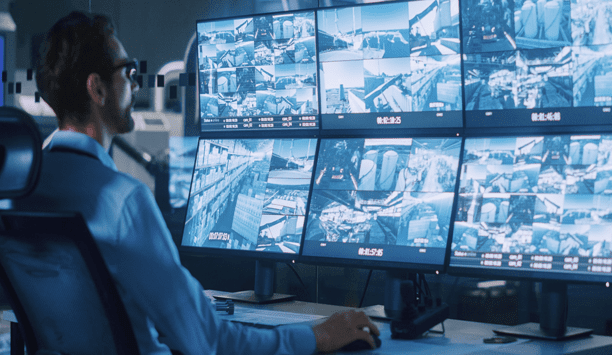
5 Must-Haves For Seamless VMS Connectivity
Download
Improving City Mobility Using Connected Video Technology
Download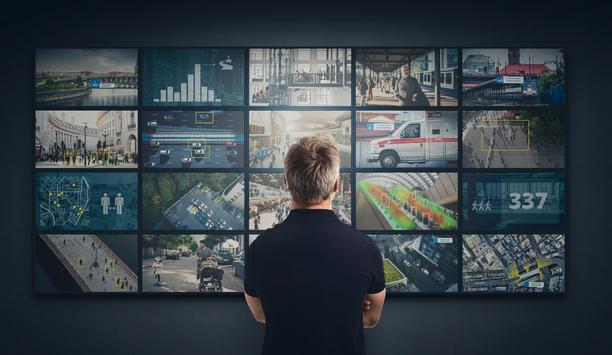
Connected Video Technology for Safe Cities
Download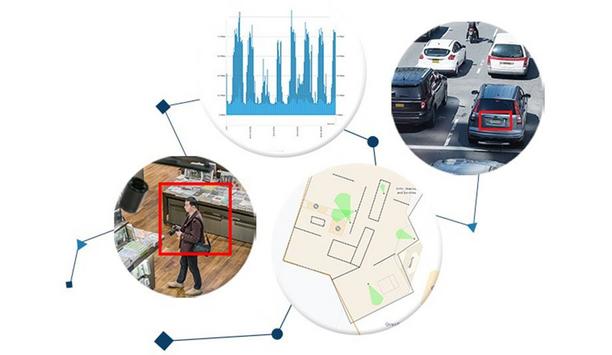
Cloud Video and Smart Cities
DownloadSinaloa, Mexico: Connected Cities are Safer Cities
Download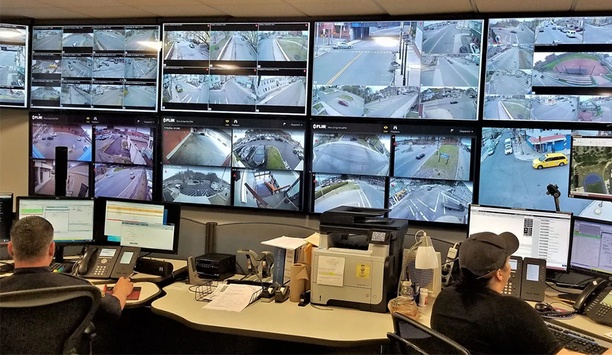
Lawrence, Massachusetts Deploys FLIR Video System For Safety
Download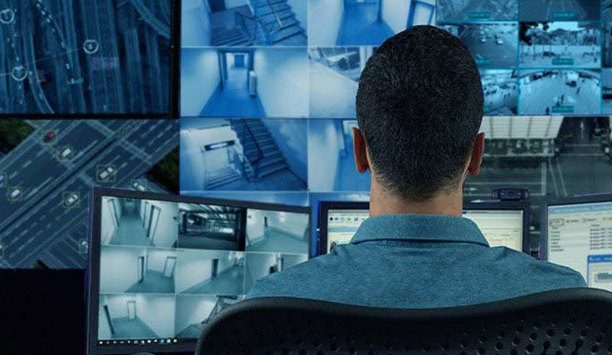
How To Overcome The Storage Challenges Of Adopting Surveillance AI
Download

